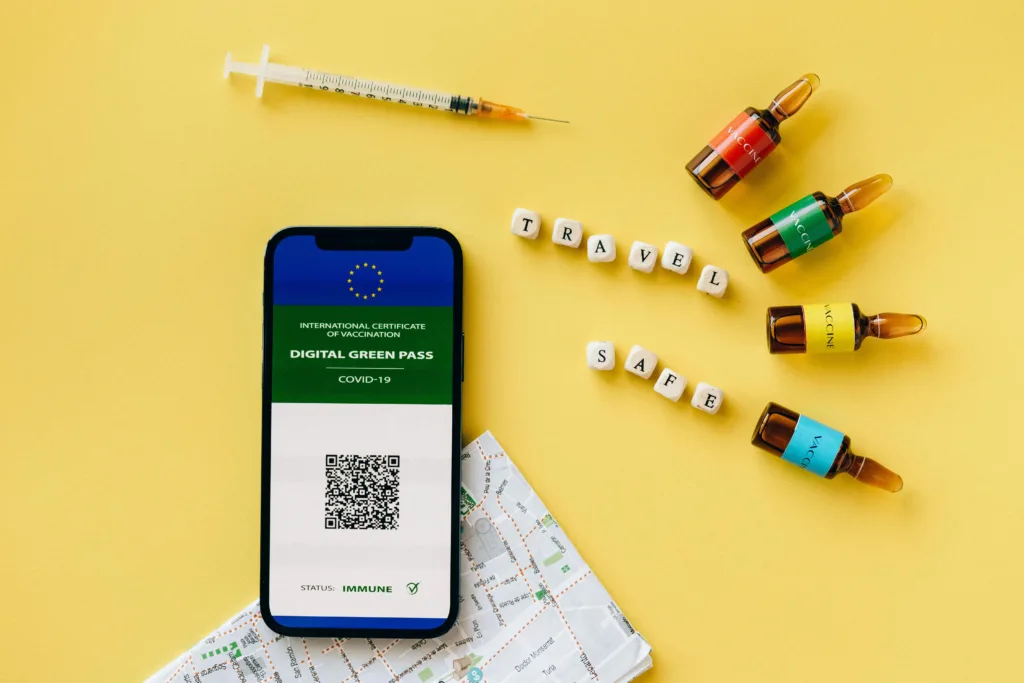If you’re embarking on a long-term travel adventure, you’re probably wondering how to keep your subscriptions and bills in check while on the move. It can be a daunting task, but fear not! We have some tips and tricks to help you stay on top of your financial responsibilities while exploring the world. From setting up automatic payments to utilizing virtual mailboxes, managing your subscriptions and bills while traveling has never been easier. So, pack your bags and let’s dive into the practical solutions that will ensure your financial peace of mind throughout your globetrotting journey!
Table of Contents
1. Automate Your Payments
1.1 Set Up Automatic Bill Pay
One of the most efficient ways to manage your subscriptions and bills while traveling long-term is by setting up automatic bill pay. This convenient service allows you to automate the payment of your regular bills, such as utilities, internet, and insurance premiums. By linking your bank account or credit card to the service provider, the payment will be deducted automatically on the due date. This eliminates the need for manual payments and ensures that your bills are always paid on time, even if you’re in a different time zone or without internet access.
1.2 Use Bill Reminder Apps
To stay on top of your bills and avoid late payment fees, consider using bill reminder apps. These handy tools help you keep track of all your bill due dates, sending you notifications and alerts when a payment is coming up. Some apps even allow you to set up multiple accounts, categorize bills, and provide a summary of your upcoming payments. With bill reminder apps, you can have peace of mind knowing that you won’t miss any payment deadlines, even if you’re constantly on the move.
1.3 Consolidate Bills and Subscriptions
While traveling long-term, managing multiple bills and subscriptions can be overwhelming. To simplify your financial responsibilities, consider consolidating your bills and subscriptions whenever possible. For example, if you have multiple credit cards, you can transfer the balance to a single card to minimize the number of payments you need to track. Additionally, you can explore bundle options for your cable, internet, and phone services, which often offer discounts and a single combined bill. Consolidation allows you to streamline your payments and make managing your finances easier while you’re on the go.
2. Notify Service Providers
2.1 Inform Your Bank and Credit Card Companies
Before embarking on your long-term travel adventure, it’s crucial to notify your bank and credit card companies about your plans. Inform them of the dates and destinations of your trip to ensure that your cards won’t be flagged for suspicious activity while you’re away. This way, you can avoid any unnecessary issues or card blocks that could disrupt your access to funds. Additionally, some banks offer travel-specific benefits, such as waived ATM fees or preferential exchange rates, so it’s worth checking with your financial institutions to see if you can take advantage of these perks.
2.2 Contact Utility Companies
If you’ll be away from your home for an extended period, it’s essential to contact your utility companies to inform them of your absence. They can guide you through the process of temporarily suspending or adjusting your services, such as electricity, gas, water, and waste management. By doing so, you can avoid paying for services you’re not using and reduce unnecessary expenses. Keep in mind that some utilities might require a notice period, so it’s best to contact them well in advance to ensure a smooth transition.
2.3 Alert Subscription Services
With the rise of subscription-based services, it’s common to have multiple subscriptions for entertainment, fitness, beauty, and more. Before you begin your long-term travel, make a list of these subscription services and reach out to each provider to inform them about your plans. Many companies have options to pause or temporarily suspend your subscription, enabling you to save money while you’re not actively using their services. Some providers even offer specific travel plans or discounted rates for travelers, so it’s worth exploring your options to see if any special arrangements can be made.
2.4 Notify Insurance Providers
Traveling without adequate insurance coverage can be risky, especially for extended periods. It’s important to contact your insurance providers, including health, auto, and home insurance, to inform them of your travel plans. They can advise you on the best course of action, whether it’s maintaining your existing coverage or adjusting it to meet your specific needs while you’re away. Additionally, some insurance providers offer travel-specific policies that provide comprehensive coverage for long-term travelers. By staying in touch with your insurance providers, you can ensure that you have the necessary coverage and avoid any potential issues if you need to make a claim while abroad.

3. Suspend or Cancel Subscriptions
3.1 Temporary Holds or Suspensions
If you’re confident that you’ll resume your subscriptions once you return from your long-term travel, it might be beneficial to explore temporary holds or suspensions. Many subscription services, such as gym memberships, magazine subscriptions, or meal delivery services, offer the option to freeze your membership without canceling it entirely. By opting for temporary suspensions, you can maintain your membership benefits while saving money on monthly fees during your absence. Just remember to check the terms and conditions of each service provider to understand their specific policies.
3.2 Cancel Unnecessary Subscriptions
While traveling long-term, it’s an opportune time to evaluate your subscriptions and determine which ones are essential and which ones you can live without. Take a closer look at each subscription and assess if it aligns with your current needs and travel lifestyle. If you find that you rarely use a particular service or it doesn’t provide enough value to justify the cost, it might be time to cancel it. By eliminating unnecessary subscriptions, you can free up funds that can be used for more meaningful experiences during your travels.
3.3 Consider Flexible Subscription Options
If you anticipate changes or uncertainties in your travel plans, consider opting for subscription services that offer flexible options. Some companies now provide month-to-month subscriptions instead of long-term contracts. This flexibility allows you to easily pause, cancel, or adjust your subscription as needed, without being tied down to a specific timeframe. By choosing flexible subscription options, you can have greater control over your expenses and adapt your subscriptions to align with your changing travel circumstances.
4. Use Online Banking and Apps
4.1 Set Up Online Banking
Online banking is a game-changer for travelers. By setting up online banking before you embark on your long-term journey, you can conveniently manage your finances from anywhere in the world. Online banking allows you to access your account balances, review transactions, pay bills, transfer funds, and even set up automatic payments, all from the comfort of your laptop or mobile device. It offers unparalleled convenience and flexibility, ensuring that you have full control over your finances while you’re on the road.
4.2 Download Mobile Banking Apps
In addition to online banking, it’s essential to download the mobile banking apps provided by your financial institutions. These apps enable you to access your accounts on the go, making it easier to monitor your transactions and manage your money. With mobile banking apps, you can check your account balances, transfer funds between accounts, deposit checks, and receive important notifications from your bank or credit card company. Having these apps installed on your phone provides a seamless and efficient way to handle your financial tasks while you’re traveling.
4.3 Monitor Transactions and Payments
While traveling long-term, it’s crucial to stay vigilant and monitor your transactions and payments closely. Regularly review your account statements or use online banking to check for any unauthorized transactions or discrepancies. By promptly identifying and reporting any fraudulent activity, you can protect yourself from financial losses and ensure the security of your personal and financial information. Additionally, keeping track of your transactions allows you to maintain an accurate record of your expenses, helping you stick to your travel budget and make informed financial decisions.

5. Forward or Redirect Mail
5.1 Temporary Mail Forwarding
When you’re away from home for an extended period, it’s important to make arrangements for your physical mail. One option is to set up temporary mail forwarding with your local postal service. This service allows you to redirect your mail from your home address to a different address, such as a family member or trusted friend. By doing so, you can ensure that your important mail, such as bills or official documents, is received and managed appropriately while you’re traveling. Temporary mail forwarding provides peace of mind knowing that your mail won’t pile up or be left unattended in your absence.
5.2 Use a Virtual Mailbox
For a more comprehensive mail management solution, consider using a virtual mailbox service. Virtual mailboxes provide you with a physical address where your mail can be received, scanned, and managed online. With this service, you can access your mail through a secure online portal, allowing you to view, forward, or discard mail items as needed. Virtual mailboxes are particularly useful for long-term travelers as they offer flexibility, convenience, and a centralized way to handle your mail from anywhere in the world.
5.3 Designate a Reliable Address
If neither temporary mail forwarding nor a virtual mailbox is suitable for your needs, it’s crucial to designate a reliable address for your mail. This could be the address of a trusted friend, family member, or a reliable mail receiving and forwarding service. Ensure that the designated address is accessible and secure, allowing your mail to be received and managed responsibly. By designating a reliable address, you can have confidence in knowing that your mail will be taken care of while you’re away.
6. Opt for Paperless Billing
6.1 Switch to Electronic Statements
One way to simplify your financial obligations while traveling long-term is by opting for paperless billing. Instead of receiving physical statements and invoices in the mail, choose to receive electronic statements via email. Most service providers, including utility companies, banks, and subscription services, offer the option to switch to electronic statements. By going paperless, you not only reduce clutter but also minimize the risk of losing or misplacing important documents. Electronic statements can be easily accessed, stored digitally, and printed if needed, providing convenience and organization while you’re on the move.
6.2 Update Email Addresses
To ensure that you receive all your electronic statements and notifications promptly, it’s important to update your email addresses with your service providers. Double-check that the email address associated with each account is correct to avoid any communication breakdowns. Additionally, consider creating a dedicated email folder or filter for your financial statements and notifications. This will help keep your inbox organized and make it easier to locate and reference important emails when needed.

7. Keep Track of Expiration Dates
7.1 Create a Subscription Calendar
As a long-term traveler, it’s crucial to keep track of the expiration dates for your subscriptions to avoid unexpected renewals or cancellations. Create a subscription calendar that includes all the relevant details for each subscription, such as the renewal date, payment amount, and cancellation policy. This calendar can be created in a digital format or as a physical planner, depending on your preference. Regularly review your subscription calendar to stay informed and plan accordingly, ensuring that you’re in control of your subscriptions and avoid any unwanted charges or disruptions.
7.2 Set Reminder Alerts
In addition to the subscription calendar, utilize reminder alerts to ensure that you never miss an important expiration date. Set up notifications on your phone, email, or calendar app to remind you in advance of any upcoming renewals or cancellations. This simple step can save you from automatic renewals that you may no longer need or want while providing an opportunity to assess your options and make an informed decision before the due date. By setting reminder alerts, you can effectively manage your subscriptions and avoid any unnecessary expenses.
8. Set Budget and Track Expenses
8.1 Establish a Travel Budget
Managing your finances while traveling long-term starts with setting a travel budget. Determine how much you’re willing to spend on accommodation, transportation, food, entertainment, and other categories. Take into account your planned duration of travel, your destination(s), and any anticipated expenses. By establishing a budget, you have a clear framework for your spending and can make informed financial decisions aligned with your travel goals and priorities.
8.2 Track Expenses with Apps
To effectively manage your expenses while on the road, consider using expense tracking apps. These apps allow you to record your expenses in real-time, categorize them, and analyze your spending patterns. Some apps even have budgeting features that help you stay on track with your financial goals. By diligently tracking your expenses, you can identify areas where you may be overspending and make adjustments as necessary. Expense tracking apps offer convenience and valuable insights into your spending habits, empowering you to make smarter financial choices during your travels.
8.3 Use Expense Management Tools
In addition to expense tracking apps, explore expense management tools that can assist you in organizing and managing your financial records. These tools provide a centralized platform for storing receipts, creating expense reports, and generating financial summaries. By leveraging expense management tools, you can simplify the administrative side of your long-term travel and ensure that you have accurate records of your expenses for tax purposes or reimbursement, if applicable.

9. Consider Travel Insurance
9.1 Evaluate Travel Insurance Plans
Travel insurance is an essential consideration for long-term travelers. It provides coverage for medical emergencies, trip cancellations, lost luggage, and other unforeseen circumstances. Before embarking on your journey, thoroughly evaluate different travel insurance plans to find one that suits your needs. Consider factors such as coverage limits, deductibles, and exclusions. Pay close attention to the duration of coverage and any limitations on the countries or regions covered. By selecting the right travel insurance plan, you can have the peace of mind knowing that you’re protected in case of unexpected events during your travels.
9.2 Check Coverage for Personal Belongings
When reviewing your travel insurance policy, pay special attention to the coverage for personal belongings. Long-term travel often involves carrying valuable items, such as laptops, cameras, or jewelry. Ensure that your travel insurance provides adequate coverage for these belongings, including theft, loss, or damage. If necessary, consider additional coverage or separate insurance policies to protect your high-value items. By understanding your insurance coverage for personal belongings, you can take appropriate precautions to secure your possessions and mitigate financial losses in case of unexpected incidents.
10. Seek Assistance from Friends or Family
10.1 Ask for Help with Bill Payments
If you anticipate challenges in managing your bill payments while traveling, don’t hesitate to ask for help from friends or family members. Inform them about your travel plans and discuss the possibility of them assisting with bill payments on your behalf. This could involve providing access to your online banking accounts or coordinating with service providers directly. Having someone you trust handle your bill payments can alleviate the stress of managing multiple responsibilities while you’re away, ensuring that your bills are paid on time.
10.2 Have Someone Monitor Mail
While you’re traveling long-term, it’s important to have someone responsible monitor your physical mail. Ask a trusted friend or family member to check your mailbox regularly and inform you of any important mail items. This could include bills, official documents, or time-sensitive notifications. By having someone reliable oversee your mail, you can stay informed and address any urgent matters promptly. You can also provide them with instructions on how to handle specific types of mail, such as forwarding, discarding, or scanning important documents for your review.
Managing your subscriptions and bills while traveling long-term doesn’t have to be overwhelming. By automating your payments, notifying service providers, suspending or canceling unnecessary subscriptions, utilizing online banking and apps, and implementing other strategies outlined in this article, you can effectively stay on top of your financial responsibilities. Remember, it’s important to plan in advance, communicate with relevant parties, and diligently track your expenses to ensure a smooth and hassle-free experience while you’re exploring the world. Bon voyage!

